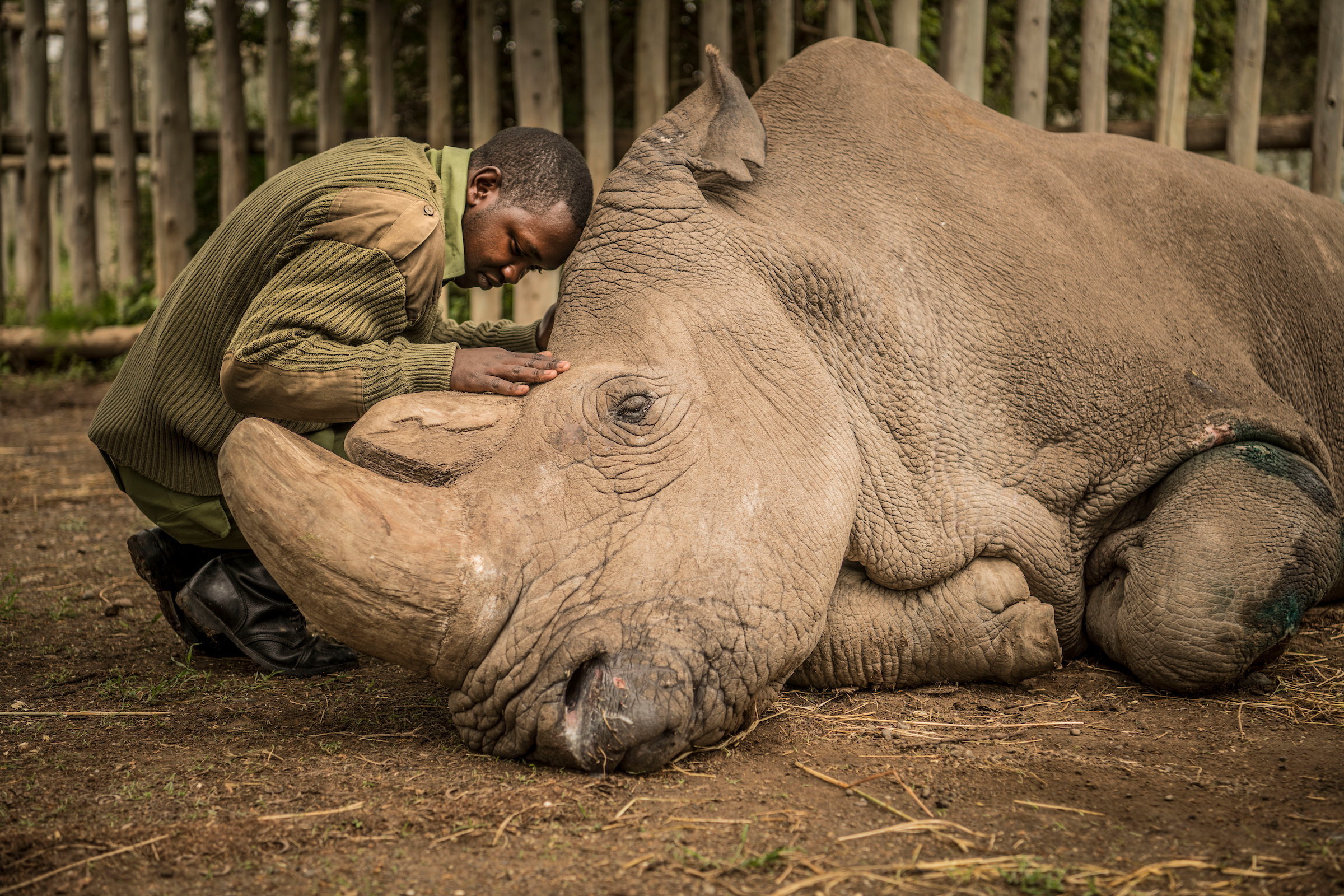Goodbye Sudan, the World’s Last Male Northern White Rhino

I saw Sudan for the first time in 2009 at the Dvůr Králové Zoo in Czechia (the Czech Republic). I can recall the exact moment. Surrounded by snow in his brick and iron enclosure, Sudan was being crate trained—learning to walk into the giant box that would carry him almost 4,000 miles south to Kenya. He moved slowly, cautiously. He took time to sniff the snow. He was gentle, hulking, otherworldly. I knew I was in the presence of an ancient being, millions of years in the making (fossil records suggest that the lineage is over 50 million years old), whose kind had roamed around much of our world.
On that winter’s day, Sudan was one of only eight northern white rhinos left alive on the planet. A century ago there were hundreds of thousands of rhinos in Africa. By the early 1980s, hunting had reduced their numbers to around 19,000. Rhino horns, like our fingernails, are simply keratin, with no special curative powers, yet they’ve long been valued by people around the world as antidotes for ailments from fever to impotence.
Nine years after the airlift, I received a call to hurry to Kenya. At 45, Sudan was elderly for his species. He had lived a long life, but now he was dying. In his last years he experienced again his native grasslands, although always in the company of armed guards to keep him safe from poachers. And he had found stardom—he’d been affectionately dubbed the “most eligible bachelor in the world.”
Sudan’s death was not unexpected, yet it resonated with so many. When I arrived, he was surrounded by the people who had loved him and protected him. Joseph Wachira, the man pictured with Sudan on the previous page and one of his dedicated keepers, went to give him one more rub behind his ear. Sudan leaned his heavy head into Wachira’s. I took a photo of two old friends together for the last time.
Those final moments were quiet—the rain falling, a single goaway bird scolding, and the muffled sorrow of Sudan’s caretakers. These keepers spend more time protecting the northern white rhinos than they do with their own children. Watching a creature die—one who is the last of its kind—is something I hope never to experience again. It felt like watching our own demise.
The northern white rhinos may not survive human greed, yet there is a tiny sliver of hope. Today only two females are left in the world, but plans are in place to try in vitro fertilization to breed them.
This is not just a story to me. We are witnessing extinction right now, on our watch. Poaching is not slowing down. If the current trajectory of killing continues, it’s entirely possible that all species of rhinos will be functionally extinct within our lifetimes. Removal of a keystone species has a huge effect on the ecosystem and on all of us. These giants are part of a complex world created over millions of years, and their survival is intertwined with our own. Without rhinos and elephants and other wildlife, we suffer a loss of imagination, a loss of wonder, a loss of beautiful possibilities. When we see ourselves as part of nature, we understand that saving nature is really about saving ourselves.
Sudan taught me that.
This iconic print is available at $550. It will be printed on archival paper which is designed to meet museum longevity requirements.
Learn more here.
Available in these sizes
11 x 16
$550
16 x 24
$675
20 x 30
$925
If you have any questions prior to purchase, please contact me .

